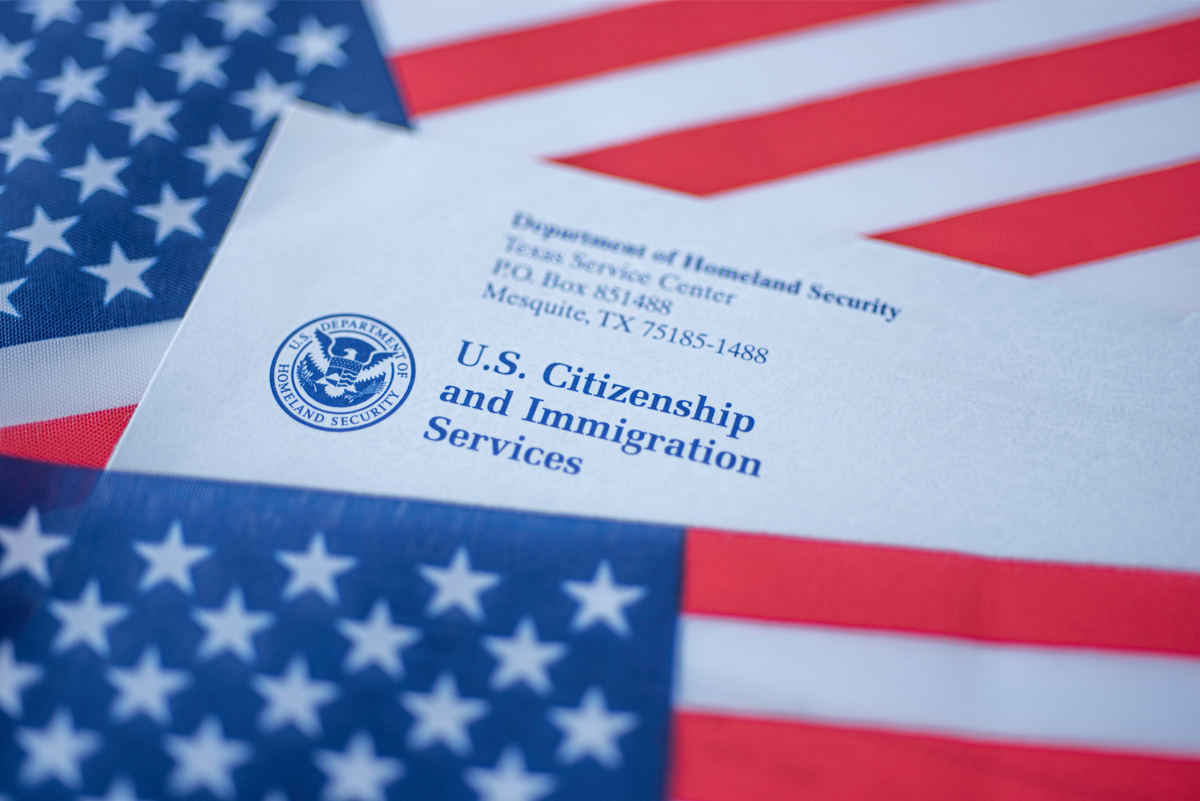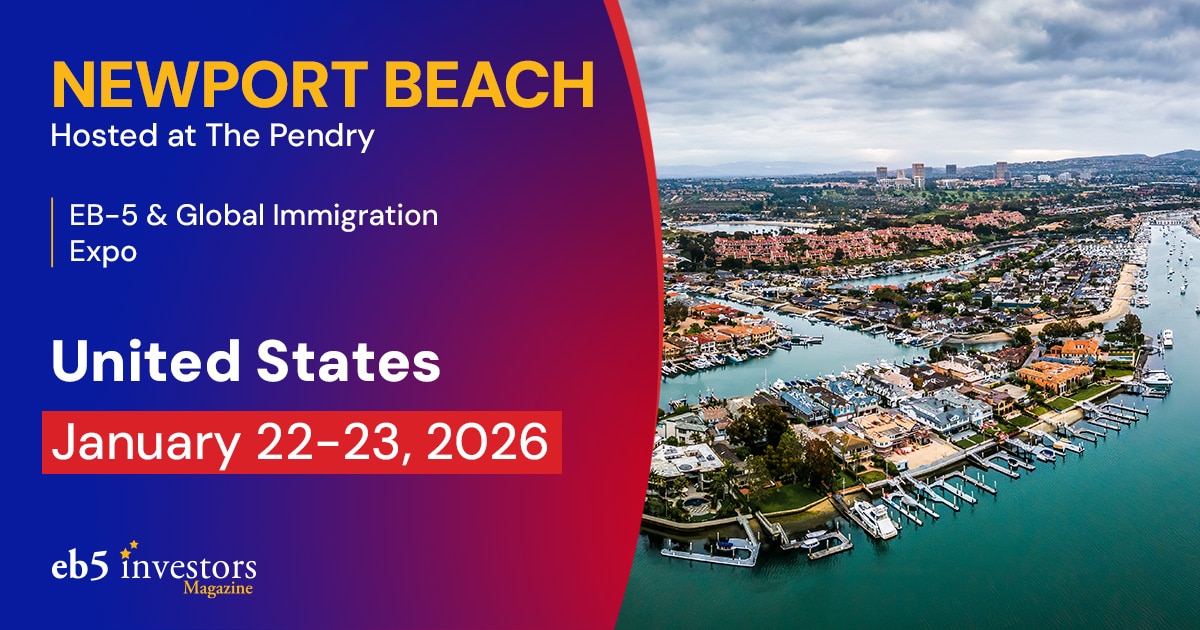(Reviewed July 2025)
Overview of EB-5 Forms
Participants in the EB-5 visa program are required to file several forms to demonstrate their eligibility for different parts of the process. These forms are typically prepared and submitted by immigration attorneys on behalf of the applicants. Other professionals—such as economists, business plan writers, accountants, and securities attorneys—also contribute supporting documentation. Costs and processing times vary based on the specific form being reviewed. While most EB-5 forms are filed with U.S. Citizenship and Immigration Services (USCIS), some are submitted to the Department of State. Key forms for EB-5 applicants include the I-526 petition, I-485 application, DS-260 application, and I-829 petition. In addition, EB-5 Regional Centers must file Form I-924 to apply for their designation from USCIS.
I-526 Petition
The I-526 petition is filed by EB-5 immigrant investors in the first step of the EB-5 visa application process. The I-526 petition proves that the investor has made, or is in the process of making, the required investment amount to a business entity that qualifies for the EB-5 program. Investors must also provide evidence that their investment will meet EB-5 job creation requirements. Forms of evidence that are provided along with the I-526 application can include articles of incorporation, bank statements, business plans, and tax records. There is a $11,160 filing fee for I-526.
I-485 Application
The I-485 application is filed by EB-5 visa applicants during the second step of the EB-5 process. The I-485 is filed by EB-5 participants who already lawfully reside in the United States in a valid non-immigrant status. An approved I-485 application allows non-immigrants in the U.S. to “adjust” their status from a non-immigrant to a conditional permanent resident based on their approved I-526 petition. The I-485 application includes a security check along with evidence that the immigrant is of good moral character, is eligible to adjust their status, and will not become a public charge when in the U.S. Examples of this evidence include a valid birth certificate, photographs of the applicant, medical examination reports, and vaccination records. The I-485 application costs $1,400, including an $85 fee for biometrics services.
DS-260 Application
Form DS-260, the Online Immigrant Visa Application, is used by EB-5 investors and their eligible family members who are applying for U.S. permanent residency through consular processing—that is, from outside the United States. This form is submitted after the investor’s I-526 petition has been approved and when a visa number is available, initiating the next step in the immigration process. Applicants complete the DS-260 online via the U.S. Department of State’s Consular Electronic Application Center (CEAC), providing detailed biographical, travel, and family information. Once submitted, the investor and dependents are scheduled for an interview at the U.S. embassy or consulate in their home country. Approval following this interview results in the issuance of immigrant visas, allowing entry into the U.S. as conditional permanent residents under the EB-5 program.
DS-230 Application
The DS-260 (Online Immigrant Visa Application) has replaced the DS-230 for nearly all immigrant visa categories, including EB-5. The DS-230 is used in rare circumstances, such as adoptions or paper-based processing.
The DS-230 application is very similar to the I-485 application but is filed by EB-5 visa applicants who do not have existing status in the US. The DS-230 application is submitted to the Department of State through the National Visa Center. Once approved, the EB-5 visa investor will obtain their two-year conditional permanent residency status, which enables them to come to the U.S. The DS-230 application collects biographical data proving that the applicant will be able to support themselves once in the U.S. The application also collects evidence proving that the applicant has obtained a proper security check, medical exam, and any needed police clearances. An interview at the U.S. embassy or consulate located within the applicant’s country is also required as part of the DS-230 application. Processing times vary depending on where the applicant is from, and some countries may experience lengthy security check delays.
I-829 Petition
The I-829 petition is filed 21 to 24 months after the investor receives conditional permanent residency in the U.S. through the EB-5 process. The I-829 proves that the applicant has met all EB-5 requirements. For instance, it must be proved that the required jobs were created, that the investment was sustained, and that the business plan was followed. The I-829 is submitted at the end of the two-year EB-5 residency period. Once approved, the I-829 removes the existing 2-year conditional residency and makes the EB-5 investor a lawful permanent resident of the United States. The investor files the petition on behalf of himself and his dependents who will receive ten-year green cards upon approval. The current fee is $9,525, which now includes biometric services. It typically takes the USCIS.
I-924 Application
As of June 1, 2022, Form I-924 was retired following the enactment of the EB-5 Reform and Integrity Act (RIA). It was replaced by Form I-956 for regional center designations and Form I-956F for capital investment project applications.
I-956 Application
Form I-956 is the application used by entities to obtain or renew designation as an EB-5 Regional Center, allowing them to sponsor investment projects that create jobs and stimulate economic growth in the U.S. This form requires detailed business plans and compliance documentation and is accompanied by Form I-956H for individuals involved in the regional center. As of April 2024, the filing fee for Form I-956 is $47,695, significantly higher than before, with separate biometric fees for involved persons. The form is critical for EB-5 projects managed through regional centers, and accurate filing with the correct fees is essential to avoid delays or denials.







